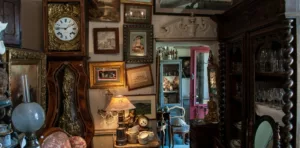Antique demand proper care and handling from the collector’s side. Because of their ancient nature, Antiques are susceptible to quick damaging if proper protective measures are not taken within time. Antiquates can cost you a lot, both in terms of money and passion, and losing any part of your precious collectibles is quite painful. For a quick look at some of the amazing collectibles and their preservation techniques, you can visit this link.
The following protective measures can not only preserve the look of your collectibles but also enhance their longevity:
Store in display cabinets:
A number of Antique fall a prey to improper storage and handling because of the inexperience of the collector. While storing antiquates in drawers or similar storages for a prolonged time can result in damaging of the piece if certain things such as acid paper are lying around it. Similarly, the careless placement of antiquates in open storage results in deposition of layers of moisture and dirt which leads to quick deterioration of the antique piece. Store your antiquates in display cabinets, large display drawers or curio cases and take proper maintenance measures in order to preserve the antiquates.
Keep antiques away from light:
Continuous exposure of sunlight or any other form of light results in fading of Antique colors. The antique pieces which have high levels of organic material such as textiles, fabrics, wood, and paper etc are highly affected by light damages. Even the sturdiest of the pieces can melt or crack under continuous exposure to light. It is important to control the light of storage hallways within an optimal range. The use of picture shades and light meters can be helpful in this regard.
Provide balanced humidity:
The absence of humidity can cause gradual cracking of antique paints, dyes, wood and other materials. Rust, mold and fungal attacks are prevalent if the humidity exceeds optimal level. The storage of antiquates shall be done within a balanced humidity level of 50%. You can use a hygrometer to measure the humidity and take necessary steps accordingly.
Store in a controlled temperature:
Rapid and strong temperature fluctuations can greatly damage the color and material of antique things. The flaking of paint, breaking of wood and cracking of material is observed if the temperature fluctuations are too rapid and frequent. If you have a large concentration of organic material in your antique things, it is important to store them in a cool place. The suggested temperature falls at a level of 64 degrees Fahrenheit.
Avoid unnecessary handling:
The excessive handling of antique things results in the deposition of oily skin secretions on the surface of Antiques. This results in the rapid deterioration of the antique piece. In order to avoid this, handle the antique things only when needed. For handling of fragile antique items, wearing of cotton gloves is suggested.
Avoid frequent cleaning:
Some antiquate demand light cleaning whereas the others need frequent cleaning. Antiquates such as Tiffany lamps improve in their value if dust is deposited on them. Other antiquates such as furniture and display pieces can be cleaned with a soft bristled brush. Doing research prior to cleaning of items is highly recommended.








